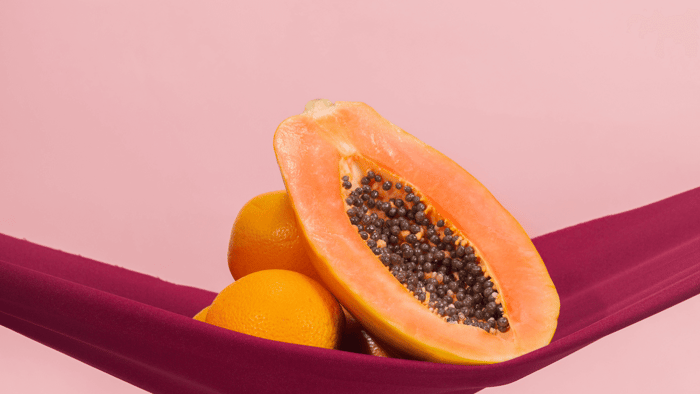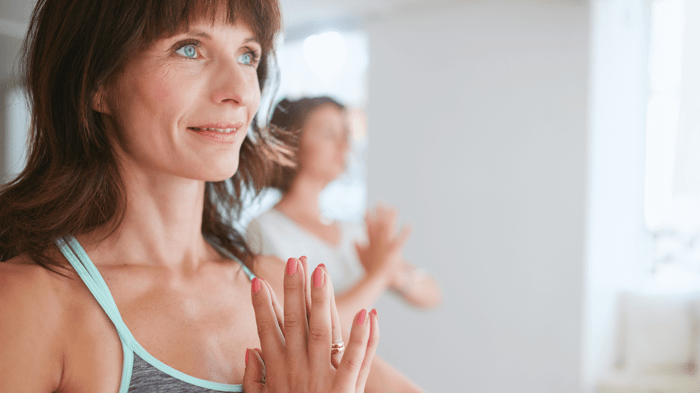
I don’t need to convince you that regular exercise is a great way to improve your health, wellness, and overall quality of life: after all, you can’t get on the internet these days without tripping over the latest fitness fad!
From spin to CrossFit to old-fashioned jogging, we’re spoiled for choice when it comes to our exercise options. To help you choose, we want to talk about three of our favorite fitness classes: Pilates, barre, and yoga.
All three schools of motion sculpt your body while helping you increase your flexibility, balance, and core strength. They are also all recommended as a safe option for people with prior injuries or anyone who wants to improve posture. However, there are critical differences in each approach.
Let’s take a deeper dive into the three different practices to learn more about how they’re done and why you might choose each one--and remember that no matter how good a fad sounds, the best fitness routine for you is the one you stick with! We love all these classes and find time for them all week--and we hope you will too!
Pilates

Where did it come from?
Pilates is a German fitness method developed by a man named Joseph Pilates during World War I. The exercise system was originally created as a method for rehabilitating injured soldiers. Over time, Pilates chose to broaden his method and created routines for people of all walks of life looking to heal and strengthen their bodies.
What will Pilates do to my body?
In Pilates, you use your body weight to create resistance and focus on exercises for specific muscle groups. The movements are small and slow, providing a slow-burn full-body workout.
Pilates will allow you to tone your body and increase your muscle strength without becoming bulky. You will see a lot of improvement in your core muscles, flexibility, and posture. Pilates has also been known to reduce chronic lower back pain and help prevent future injuries. It offers a more vigorous core workout than yoga and is an intense fitness method that goes easy on your joints.
Pilates also helps you to build focus and willpower. It takes a lot of concentration and coordination to accomplish the proper breath work and body positions. Participating in Pilates will leave you more determined and relaxed in everyday life.

What’s a class like?
The average Pilates class is around 45-60 minutes and involves using a variety of specialized equipment. Over time, you may come to own your own balls, straps, and mats. As a beginner, simply inquire with the studio owner whether they provide the equipment or if they have any available for rental.
Similarly to yoga, you will be working out with bare feet and should wear comfortable and stretchy clothing. Your instructor will take you through a series of held positions designed to strengthen your core. Over time, you will get to know the sequence and it will be easier to keep up. Have patience with yourself as you learn the motions.
Until you are able to complete the sequence fully, there are many modifications your instructor can show you to accommodate your current ability and fitness level. Be sure not to push yourself beyond your comfort zone: your body will become stronger and more flexible if you give it time.
To see maximum results, instructors recommend that you attend class at least three times a week. You might want to fill your off days with cardio, since Pilates offers very little cardiovascular training.
Barre

Where did it come from?
Barre was created by Lotte Berk, a dancer who fled Nazi Germany and settled in the UK during World War II.
In 1959, Berk had two big challenges on her mind: recovering from a back injury and empowering the women around her.
She solved both by creating barre, which helps the body heal from and resist injury and served as the focal point for a new community of strong (literally!) women. It’s a mixture of ballet-inspired exercises and Pilates.
What will barre do to my body?
Who hasn’t admired the long, lean strength of professional dancers? With its roots in traditional ballet training, barre’s small, concentrated movements are based on the exercises that dancers use to strengthen themselves. Starting a barre habit is a great first step towards achieving that for yourself.
Barre tones, strengthens, and builds core strength. No two classes are ever the same, so it’s hard to get bored, and you’ll flex your brain muscle incorporating creative new exercises.
Cardio is incorporated throughout the class too, so you’ll work up an endorphin high as well. The goal is to increase your cardiovascular endurance while simultaneously boosting your metabolism to melt away fat.
Like Pilates and yoga, barre can be exactly what you need it to be, with many modifications available--the most common being the use of 2-10 lb weights. To build strength and burn fat, opt for a heavier set of dumbbells, and to tone use bodyweight or lighter weights.

What’s a class like?
You wouldn’t immediately know the difference between a barre studio and a dance studio, with full-length mirrors and barres on every wall. However, once you notice the bands, balls and other props (borrowed from Pilates) you know for sure you’re ready for barre.
Similarly to Pilates, you will focus on small, deliberate movements of specific muscle groups for 45-60 minutes. Each muscle group is worked to the point of fatigue before being fully stretched to provide relief. Focus is put on proper form, alignment, and posture, which leads to greater core muscle strength.
These classes can be quite intense at first as they go at a quick pace with little break between movements. Your muscles will stay engaged for the entire class, which is usually about an hour long. Barre classes are designed with accommodations for people of all fitness levels and abilities.
To participate in a barre workout, you don’t need many supplies. Studios provide the bar and soft exercise balls that are sometimes used. You’ll see different footwear in different studios--we see sneakers, barre socks (with grips on the bottom), and bare feet at our studio, but some studios may have footwear requirements.
Yoga

Where did it come from?
Yoga practices have been around for thousands of years. Originating in India, yoga is more than just an exercise program--it’s an entire way of life. The goal of yoga is to achieve a balance between your mind, body, and spirit.
What will yoga do to my body?
You may think that yoga is all about flexibility and relaxation--and it is! But there are major strength, balance, and muscle control benefits too.
The typical yoga poses use muscles that you don’t normally work in your everyday life, and training those muscles by holding and flowing through the postures will leave you strong, stable, and blissed out.
Repetition of movements throughout the practice helps you deepen your stretches and build on your abilities, and as you concentrate on your breath (a big focus for any yoga practice!) you’ll learn techniques for tranquility.
Depending on the styles you prefer, yoga can be a great strength-builder or a restorative addition to the rest of your workout routine.

What’s a class like?
Yoga asks you to focus not only on your presence of mind, but also on your body’s movements and your breathwork. Typically, a 45-75 minute class will begin with a series of warm-up positions and stretches that allow you to get in tune with your body and feel out where there is any pain, tightness, or tension.
From this point, the class could go a few different ways. There are many different types of yoga classes, from restorative yin yoga to vigorous vinyasa flow. Most classes are different every time, but some styles, like Ashtanga, are the same sequence every class. Some are heated, some use props or weights, and some include portions of meditation or chanting.
We encourage you to try out a few different styles as you test whether yoga is right for you! But to describe a typical class...
You will proceed through a series of movements called a vinyasa. Each class is made up of multiple vinyasa series with challenging poses designed to improve your strength and flexibility. At the end of each practice, the teacher will then lead a guided meditation where you experience a blissful relaxation. They may also use essential oils and incense to make the room fragrant and tranquil.
Over time, you will become more agile and flexible. The longer you practice, the more comfortable and routine the whole experience will become.
Pilates vs. Barre vs. Yoga

So which trendy exercise discipline is right for you? We love and incorporate all three, but depending on your goals, preferences and studio situation you may want to narrow it down! Ask yourself these questions:
- What are my fitness goals body-wise?
- Building Muscle: Pilates, Barre, or Yoga, but Barre with weights wins
- Toning Up: Pilates, Barre, or Yoga
- Blasting Fat: Barre (with weights), followed by Pilates
- Core Strength: Pilates, but Barre and Yoga work your core as well
- Flexibility: Yoga
- Balance: Yoga
- What are my fitness goals mind-wise?
- Pilates will build willpower and focus
- Barre will lift your mood and build determination
- Yoga will invigorate you and clear your thoughts
You should also consider that finding the right studio is not just about getting in your daily exercise: you’ll also become part of a community. You will want to look for a program with other women or men who share your goals and can help motivate you to keep coming.
At the end of the day, you’re going to end up choosing the studio that makes you feel the most comfortable--the one with instructors who make you feel like you can accomplish anything through time, dedication, and practice. When you find that special space, you’ll know, because it will start to feel like a second home.
If you want the variety of switching between all three types of classes and maybe even add in some weight training or Zumba, you may want to join a larger fitness club that offers a bit of everything. Life Time Fitness is a good example of an all-purpose club that offers a variety of classes, including yoga, barre, and Pilates all in one place.
What you’ll find is that although these three types of classes all involve a mind-body workout with poses, concentration, static holds, and flowing movements, they will all leave you feeling different and they all attract a different kind of energy and crowd. You won’t know what works for you until you get the motivation and courage to take the first step and walk in the door!
Once you give them all a try, let us know what you think is the best out of Pilates vs. barre vs. yoga in the comments!



